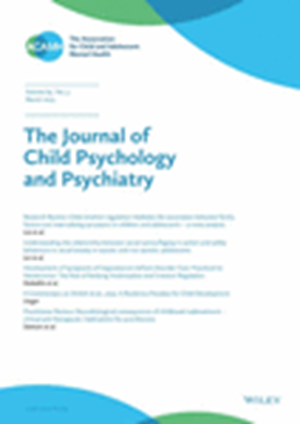Autistic traits in childhood and post-traumatic stress disorder as young adults: a cohort study
Abstract
Background
Despite the higher prevalence of childhood traumatic experiences and post-traumatic stress disorder (PTSD) in autistic adults, research on trauma-related psychopathology and autistic traits in young people is lacking. This study examined if high autistic traits in childhood predispose individuals to traumatic experiences, the development of PTSD and general psychopathology, and greater functional impairment by age 18, in both the general population and a subsample of trauma-exposed young people.
Methods
Data were utilised from the Environmental Risk (E-Risk) Longitudinal Twin Study, a nationally representative cohort of 2,232 same-sex twins born in 1994–1995 across England and Wales. Participants were a subset of children whose parents completed the Childhood Autism Spectrum Test (CAST), during assessments at ages 8, 9 and/or 12 years (N = 1,504). We tested associations between autistic traits in childhood and age-18 reports of lifetime trauma exposure, lifetime PTSD diagnosis, general psychopathology (‘p-factor’) and NEET status (‘not in employment, education or training’). Analyses were conducted controlling for sex, family socioeconomic status (SES), intelligence quotient (IQ) and accounting for family clustering.
Results
Higher autistic traits in childhood were significantly associated with greater reports of lifetime trauma exposure (Odd Ratio [OR] = 1.26, 95% Confidence Intervals [CI] = 1.03; 1.54), lifetime PTSD diagnosis (OR = 1.91, 95% CI = 1.29; 2.82), general psychopathology (beta = 3.22, 95% CI = 1.84; 4.60) and NEET status (OR = 1.48, 95% CI = 1.05; 2.09) at age 18. Only the associations of autistic traits with PTSD and general psychopathology were robust to adjustment for potential confounders. Among trauma-exposed children, autistic traits were also significantly associated with lifetime PTSD diagnosis (OR = 1.75, 95% CI = 1.15; 2.68) and psychopathology (beta = 3.36, 95% CI = 0.68; 6.04) at age 18, but only the association with PTSD held when adjusted for confounders.
Conclusions
Our findings suggest a need to develop targeted assessments and evidence-based treatments for PTSD to meet the needs of children with high autistic traits. However, whether our findings extend to diagnosed autistic children requires further investigation.




 求助内容:
求助内容: 应助结果提醒方式:
应助结果提醒方式:


